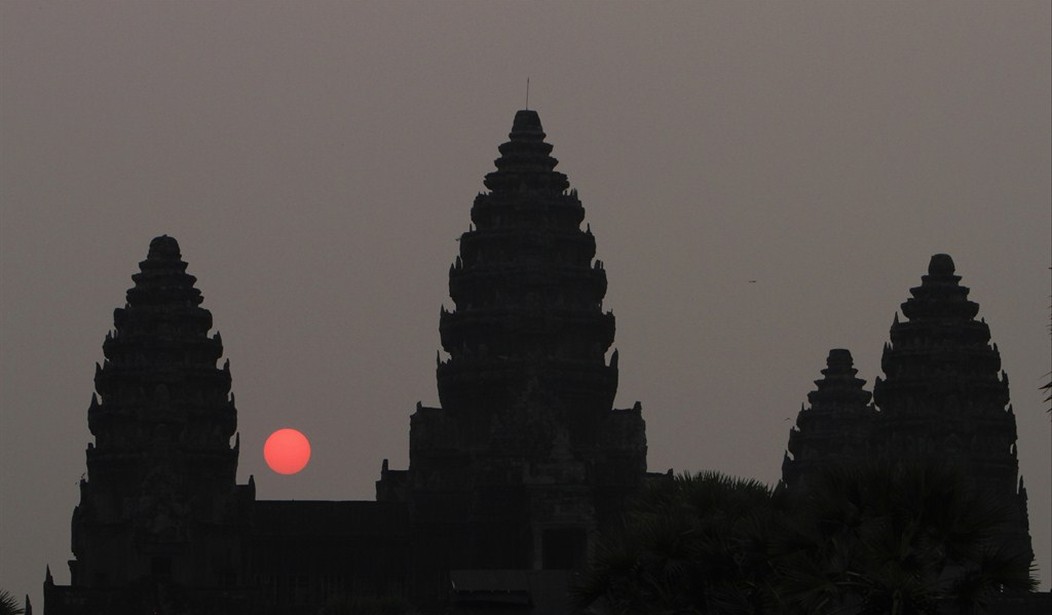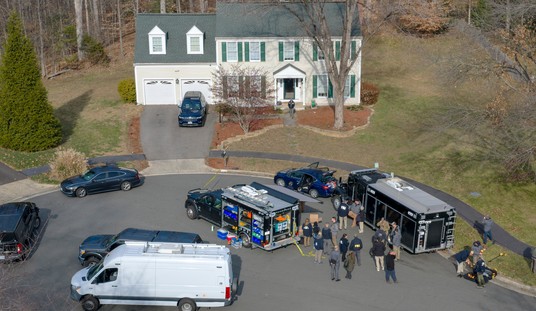What if every man who came up behind you was a potential spy? What if explosives were stacked in your school? What if you lost almost your entire family to a genocidal regime? Samnop and his family suffered through all those horrific experiences during the Cambodian civil war in the 1970s-1990s.
As I highlighted in my first piece about his experiences, Samnop, who goes by Sam, wants Americans and the world to understand how devastating war is and what happened in Cambodia under the Khmer Rouge, or the Communist Party of Kampuchea (CPK). CPK leader Pol Pot was one of the worst mass murderers of the 20th century. Indeed, 25 of Sam’s own family members died under the Khmer Rouge regime, including three of his siblings. While Sam himself was born after the era of the genocidal “killing fields” (1975-79), he grew up with the reality of civil war, as the Khmer Rouge split and multiple factions were fighting each other in Cambodia. Sam shared with me stories from his family’s experience during the “killing fields” era, and his own experience later during the civil war, overcoming huge obstacles to learn English and fulfill his dreams. Now Sam wants Americans to come to Cambodia too, and see his country for themselves.
Sam’s grandfather died during the Khmer Rouge purge of educated people, when Sam said around 95% of educated Cambodians were massacred. “I want to talk about my grandfather, my mother, and my father,” Sam said. “My grandfather, he was a professor of law and economy, so [Khmer Rouge] tried to kill my whole family. But my mom had been safe because after my grandfather know that this is trick of Khmer Rouge, they want to find the educated people[’s] family, that’s why my grandfather, he lie to the Khmer Rouge about my mom, that he said my mom is not real daughter of him, she’s adopted daughter.” So she survived to have Sam.
One question Sam’s father was asked was “‘What do you do in Phnom Penh?’ Because at that time every people have to move out from the city to the countryside, so we call new people and old people … old people just mean very old age, the people who in Khmer Rouge side, look after and observe all the new peoples.” This was after 17 April, 1975, when Khmer Rouge successfully occupied the city of Phnom Penh, when the Khmer Rouge was trying to force people out of the city to live in a classless, socialist agrarian society. This project became a deadly disaster.
Sam provided context as to why the conflict had occurred to begin with and whom the Khmer Rouge was fighting. “Lon Nol is first president of Cambodia who brought democracy from the United States, and Richard Nixon and [U.S. Secretary of State] Henry Kissinger support him,” Sam said. Unfortunately, the Khmer Rouge was determined to massacre Lon Nol supporters, most particularly the educated supporters.
“So, talking about my father, he kept secret of his knowledge and he said he don’t know anything and not educated peoples,” Sam continued, “but after Khmer Rouge regimes, we have…another regimes, we got there break down [sic] two sides of Khmer Rouge, one side occupied by Pol Pot, one side occupied by my government, and because at that time this is influence from Cold War.” In Cambodia at that time, “one side’s Communist, one side democracy, so democracy they get support from United State[s], and Communist they get support from China, Russia/Soviet Union, and Vietnam,” Sam added.
EXCLUSIVE: Survivor’s Recollections of Genocidal Khmer Rouge Civil War
Hence, “this is [the] reason why they drop the bomb in Cambodia, we have 115,273 places that they drop the bomb in Cambodia, around 28 million cluster bomb, and [up to] 4 million tons of bomb in Cambodia,” Sam told me. “And the mine[s] that we estimated, around [10 or] 11 million mine[s] in tiny country, so innocent people receive all everything. So in my purpose I need people live—in this peaceful world together, I hate war, I don’t like war,” he emphasized. He wants Americans and everyone around the world to understand the heartbreak and destruction of war on civilians.
The Cambodian civil war, of course, meant a war between different factions of the same people. “Cambodians will [say], like the chicken, baby chicken from the same mom, and then they paint the color on the face of people, and then they kill each others,” Sam said. “Because we have many sides … there[’s ]around four sides. Then it’s so great that they join together, they drop off the gun, and they develop together, develop this country, and they move land mine area to be a high school, to be a hospitals, I’m so happy that the people decide to stop the war and drop the gun, develop the country together. Because this is a great thing.”
Sam’s father survived the massacre to put his education to use when the United Nations arrived in Cambodia in 1992. “And my father, he show up his knowledge when[—]in 1992…when United Nations come as a peacekeeper, my father work as a chief of the area, because he know French very fluently, he know English, he [is] the chief of PO Box, take care of elections because United Nations come here as a peacekeeper and they start elections,” Sam said. This was also the start of Sam’s pursuit of his dream to be a tour guide.
“[A]nd luckily I met my first English teacher from Ghana, and his name Adamou, he taught English to me, he’s a United Nations army, and I learn with him almost 10 months,” Sam said. Sadly, that learning was abruptly cut short. “And one night when Khmer Rouge came inside camp, and kill some people, around three or five people in the camp of the United Nations, and they shot two of my teachers, I remember my teacher lost his finger, and the bullet scratch his skull, very bad injury, and [they] took him to Bangkok to save him,” Sam stated. “And one years [sic] later I get the postcard from him, he said ‘I’m fine, so Sam, finish your dream,’ so that’s why I try to overcome all obstacles to learn.”
And he did! Things have changed since Sam first began acting as a tour guide more than two decades ago. There are better roads and fewer mines. When I was there, it was fairly easy to visit magnificent Angkor Wat, beautiful Tonle Sap Lake and its floating villages, and Siem Reap. The people, especially the children, were smiling and friendly wherever we went. It was more difficult to be a tourist in 1999, the year I was born. “In 1999 I went to Thailand border to carry the tourists from Thailand border to see Angkor Wat,” Sam said. “From here to Thailand border at that time we spend 7 hours in 100 miles distance.”
But it helped Sam continue to learn English. “So 14 hours every days I go with empty car, I come with full of tourists, so the bus [it] is my English school, because I learn my English in the buses, and I made my dream come true, I can be a guide, I can be…a translator, interpreters, in the year 2000,” Sam ended. He hopes more people will come to Cambodia and experience its beauties and history. “So now is a long time, 24 years, but I really enjoy my job, I want to speak out my informations about my beautiful country, beautiful culture, and my smiling peoples to the world.”










Join the conversation as a VIP Member